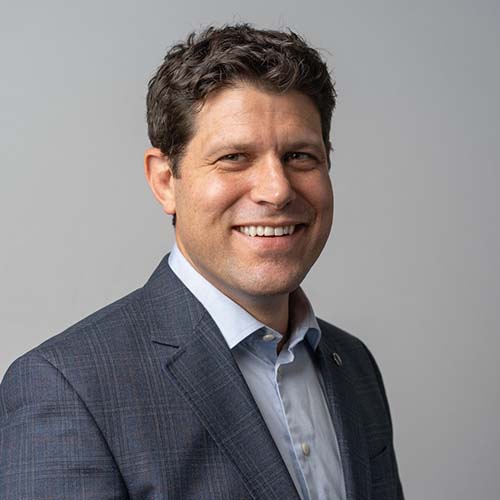Advanced Back and Orthopedic Surgical Treatment for a Pain-Free Life
The landscape of spine and orthopedic surgery has progressed substantially, using a spectrum of advanced strategies developed to reduce chronic pain and boost person end results. What might these advancements imply for the future of pain administration?
Understanding Persistent Pain
How does chronic discomfort differ from acute pain, and what effects does this difference have for therapy? In comparison, chronic discomfort continues past the expected period of healing, typically lasting for months or even years.
The effects for therapy are considerable. Sharp pain monitoring often concentrates on addressing the prompt cause with medicines, physical therapy, or surgical interventions. On the other hand, chronic pain requires a diverse strategy, as it might not react to conventional treatments. Reliable administration frequently consists of a mix of medicinal treatments, psychological assistance, and lifestyle alterations. In addition, comprehending the mental and emotional parts of chronic pain is crucial, as these aspects can worsen the experience of pain. Consequently, a comprehensive therapy technique tailored to the person is essential for improving the top quality of life for those experiencing from chronic pain.
Cutting-edge Surgical Strategies
When conservative treatments fail,The management of persistent discomfort typically leads to the exploration of ingenious surgical strategies that can give alleviation. Advancements in innovation and medical techniques have considerably transformed the landscape of spinal column and orthopedic surgical treatment, allowing specialists to resolve intricate conditions much more properly.
One such method is robotic-assisted surgery, which enhances precision and decreases the risk of difficulties (Axis Spine and Orthopedic Surgeons St Louis MO). This method permits real-time imaging and the capability to execute detailed treatments with marginal invasiveness. Furthermore, endoscopic spine surgical procedure has actually arised as an important option for treating herniated discs and spinal stenosis. By using small cuts and specialized tools, specialists can access the back with lowered trauma to bordering tissues.
Furthermore, regenerative medicine strategies, such as stem cell treatment and platelet-rich plasma (PRP) injections, are acquiring grip. These approaches intend to promote healing and cells regeneration, potentially easing the demand for more intrusive treatments. Another cutting-edge method is making use of 3D printing in developing personalized implants and medical overviews, customized to individual client anatomy. Jointly, these techniques represent a paradigm shift in how persistent discomfort is managed, using brand-new hope for those seeking long lasting alleviation.
Advantages of Minimally Intrusive Surgery
Reducing injury to the body is a vital advantage of minimally intrusive surgical treatment, which has actually transformed the area of spine and orthopedic procedures. This method makes use of smaller sized cuts contrasted to conventional surgical procedure, bring about decreased muscle and cells damage. Consequently, people experience much less pain post-operation, which can dramatically boost their total convenience throughout healing.
Another crucial benefit is the decrease in blood loss and reduced risk of infection. Smaller sized lacerations decrease the direct exposure of inner structures, therefore reducing the probability of difficulties. Furthermore, the precision of minimally intrusive methods usually converts to much shorter surgical times, which can additionally decrease the dangers linked with longer procedures.
Individuals can likewise expect a quicker go back to day-to-day activities and, in many situations, a much shorter medical facility remain. This expedited recovery process not only boosts patient fulfillment but can additionally bring about reduced health care costs. Overall, the benefits of minimally intrusive surgical procedure expand past instant surgical end results, promoting a faster, much safer, and extra reliable course to restoring movement and quality of life for people suffering from spine and orthopedic conditions.
Rehabilitation and Healing Strategies

Very early mobilization is crucial, as it promotes circulation and stops issues such as deep vein apoplexy. Progressively boosting task levels, under expert guidance, help in recovering strength and flexibility. Individuals are encouraged to involve in mild range-of-motion exercises right after surgical procedure, progressing to even more demanding exercises as healing permits.
Discomfort administration is essential to recuperation, with a focus on applying multimodal techniques that may include medications, physical therapy, and alternative treatments such as acupuncture. Education on body auto mechanics and functional designs is essential for preventing link re-injury, ensuring that individuals understand how to move safely during their healing.
Normal follow-up consultations are needed to check progression and make modifications to rehab protocols. Eventually, an interdisciplinary method that incorporates medical proficiency, person education and learning, and supportive treatment promotes a smoother transition back to daily tasks and improves long-term outcomes in spine and orthopedic surgical procedure.

Real-Life Success Stories
Real-life success tales in spine and orthopedic surgery highlight the transformative effect of effective rehab and customized treatment. Take into consideration the situation of a 52-year-old person struggling with chronic reduced back pain because of a herniated disc. After an extensive examination, a minimally intrusive discectomy was performed. Post-surgery, the client participated in a customized rehab program, that included physical therapy and gradual reinforcing exercises. Within months, they regained Continued complete mobility and returned to their energetic way of living, complimentary from pain.
Another motivating instance entails a professional athlete with a torn ACL. The surgical reconstruction was followed by a very carefully kept an eye on recuperation program. The professional athlete dedicated to extensive physical treatment, concentrating on strength and security to sustain an effective resurgence. Extremely, after six months, they not only returned to the area but likewise accomplished efficiency levels surpassing pre-injury condition.
These stories underscore the significance of personalized therapy strategies and the commitment of both individuals and doctor. Each tale serves as a testament to the developments in back and orthopedic care, illustrating that with the best approach, a pain-free life is undoubtedly attainable.
Verdict
In final thought, advanced spine and orthopedic surgical procedure represents a considerable development in the search of a pain-free life. The compelling success tales of patients underscore the transformative influence of these modern-day clinical interventions, supplying hope for improved high quality of life in individuals suffering from chronic pain.
